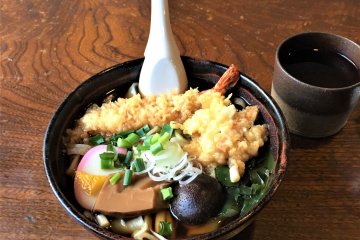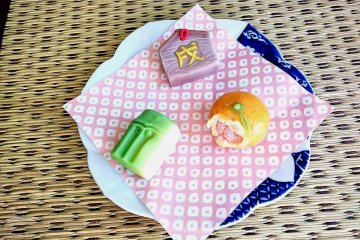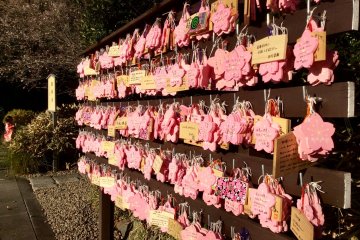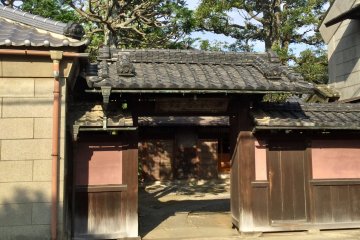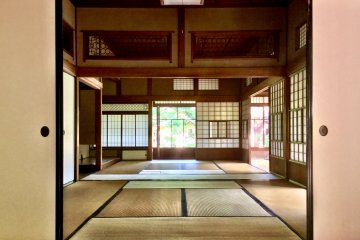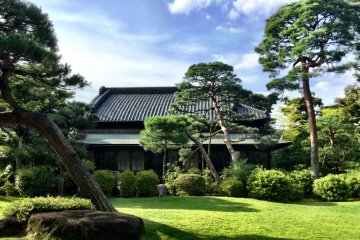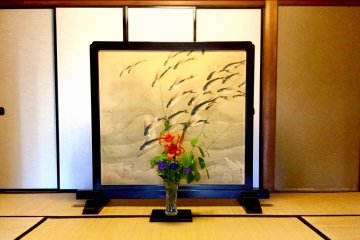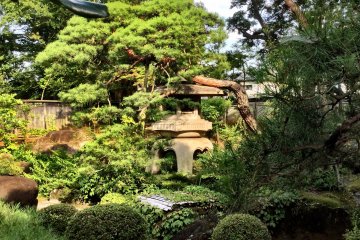Within a 10 minute walk of Nodashi Station on the Tobu Urban Park Line there are a dozen heritage buildings associated with soy sauce production, the historical industry of the city. Some are occupied by businesses and families, but the former Mogi House at Noda History Museum is open to the public and admission is free.
The Mogi House was built in 1924 by one of the merchant families involved in Noda City’s soy sauce production. Like many houses of the era, it has charming engawa, or verandas, a warren on tatami rooms, and elegant tokonoma display spaces for art pieces and calligraphy. The rippled aging glass sliding doors and delicate ranma transoms are well preserved. From the verandas, visitors can look out on the lawn and karasansui, a dry landscape garden with a massive ornamental lantern. Behind the main house is a tea house. Perhaps what brings visitors back is the house, it’s setting and the elegance of it. And it is simply a photogenically location.
For many Japanese, the house may look familiar. That is because television and movie productions have frequently used it as a location for period scenes. Since the house has drawn the attention of television and movie fans and it is now a popular spot for cosplayers and photographers. Visitors may find that some rooms are occupied by fantasy characters, or they may meet historical figures in the garden. Residents and visitors are welcome to rent out the variously sized rooms and tea house for meetings, events and photo shoots.
The museum building on the west side of the site holds historical exhibitions and displays of works by local artists and craftspeople. The next exhibit, “Kamiwaza”, an exploration of paper crafts, runs from July 14th to September 24th.
When you visit Noda City, you can make a day trip to the Kikkoman Factory Museum, Shimizu Park, Sakuragi Shrine and Kikuya Japanese confectionery shop.



